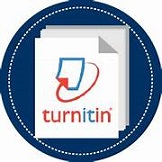Mathematics In Context: A Lesson For Teaching Geometric Sequences In High School
DOI:
https://doi.org/10.61104/ihsan.v3i1.765Abstract
Learning design is an important framework in the educational process designed to achieve learning objectives effectively and efficiently. This research aims to analyze the teaching of Geometric Rows material in Class X SMA (Senior High School) using the Problem base Learning approach. This research uses design research method. The results of this study reveal that design research with a preliminary design stage succeeded in developing an “Iceberg” and HLT-based learning trajectory on geometric row material that was effective in facilitating students' concept understanding gradually. This learning trajectory is designed through stages ranging from real contexts to abstract models, so that students can understand the patterns and formulas of geometric rows in depth. At the contextual level, the introduction of real problems helps students relate mathematical concepts to everyday life, increasing learning motivation. At the concrete model level, students are able to visualize the geometric sequence pattern through manipulation of objects and tools, so that they understand the relationship between terms intuitively. Furthermore, at the abstract model level, students are not only able to use the geometric sequence formula correctly, but also understand the conceptual basis behind it. Finally, at the generalization level, students are able to solve various application problems, showing critical thinking skills and a deeper understanding of the concepts.
References
Jonassen, D. H, “Supporting Problem Solving in PBL,” Interdiciplanary Journal of Problem-Based Learning, vol. 5, no. 2; pp. 95-119, 2011
Widjajanti, D. B, “Pengembangan Lintasan Belajar Berbasis Realistic Mathematics Education (RME) untuk materi barisan dan deret,” Jurnal Pendidikan Matematika, vol. 5, no. 1: pp. 10 – 20, 2011.
Suryadi, D, “Pendekatan Hypothetical Learning Trajectory (HLT) dalam pembelajaran matematika,” infinity Jurnal, vo. 2, no. 2, pp. 161 – 172, 2013.
Eric, “Education Resources Information Center,” https://eric.ed.gov
Springer Link, https://link.springer.com
Google Scholar, https://scholar.google.com
Bakker,A. Design Research In Education : A Practical Guide for early Career Researchers. Routledge, 2018.
Freudhental, H. Revisiting Mathematics Education: China Lectures.Kluwer Academic Publisher, 1991.
Suryadi, D, “Pendekatan Hypothetical Learning Trajectory (HLT) dalam pembelajaran matematika”. Infinity Journal, 2(2), 2013, pp. 161 – 172.
Van Den Heuvel-Panhuizen, M, “The Didactical Use of Models In Realistic Mathematics Education: An Example from a Longitudinal Trajectory on Measurement and Geometry”. Educational Studies In Mathematics, 2003, pp. 9 – 35.
Gravemeijer, M.A, Developping Realistic Mathematics Education. Ultrecht: Freudenthal Institute, 1994.
R. L. Myer, “Parametric oscillators and nonlinear materials,” in Nonlinear Optics, vol. 4, P. G. Harper and B. S. Wherret, Eds., San Francisco, CA, USA: Academic, 1977, pp. 47–160.
Downloads
Published
How to Cite
Issue
Section
License
Copyright (c) 2025 Niska Bonitasia Zendrato, Syafi’i, Ellis Mardiana Panggabean, Tua Halomoan Harahap

This work is licensed under a Creative Commons Attribution-ShareAlike 4.0 International License.











 This work is licensed under a
This work is licensed under a 